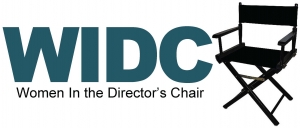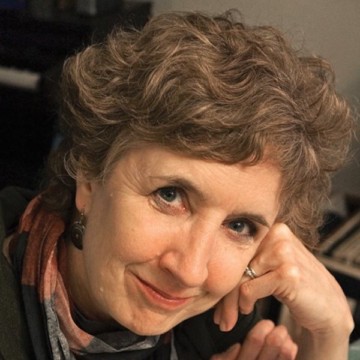WIDC ORIGINS – Peg Campbell
A Transcript of a Talk
presented at the WIDC International Directors Summit, Vancouver, British Columbia
March 12, 2014Questions:
What were you engaged in just prior to coming together to co-create WIDC?
How did WIDC come about?
What are some big take-aways?Peg Campbell:
There were a lot of parallels going on at the time that ACTRA was going through all these issues [in the early 1990’s]. Just to give you a little bit of background for me, I was one of the founders of Women In Film in Vancouver and that happened when a group of women from Toronto came out to Vancouver and said, “Hey, we started this, you should too.” And we got very excited about that and Barbara [Janes] and I worked on the constitution for what it is today. And Peggy Thompson took on being the president of it and Women In Film was born.I had also been quite involved in starting the Cineworks filmmakers co-op earlier than that, and also the Independent Film Alliance which has had various names, which is the national organization of film co-ops across the country. So a lot of work was being done, I would say starting in the late in the late 70’s into the mid-80’s to form the basis of these kinds of organizations that would shift how filmmaking was responded to. Taking it into the hands of, at that time, the younger people, and also the desire was to tell the stories that weren’t being seen on the screen….and you know to take it away from the industry at that time, the history of which, and I’m giving a long preamble to get a sense of the history…we were at a point in time where films were being made in order to be basically a tax credit. And a very different way of tax credits than are dealt with today. Business and lawyers and real estate agents were putting their money into film in order to make money [or write off the loss].
The industry was basically driven by that, not because of the quality of the story, not because of the interest in sharing or communicating or engaging, it was basically, to make a buck.
There were a lot of agencies that were created, not the National Film Board, but there were choices being made about who would make those films and it was a certain kind of company (some things haven’t changed) and a certain kind of gender (male) and a certain kind of age (older), that we were objecting to. We wanted in. We wanted to be able to tell our stories. We wanted access to it. I’m very grateful to the Canada Council for recognizing the need for the then younger filmmakers to be able to tell their stories, and setting up the co-ops and funding the co-ops in order to get equipment.
But what was happening within those co-ops was that the women were doing the work of writing the grant applications, getting the space, cleaning the space, organizing the space and getting people involved, and lo and behold, and this is such a tired old story, but the guys, the members of the co-ops were making the films. That was not across the board. There are many, many exceptions but I would say the majority of the work, of the infrastructure was being done by women, and the majority of the benefits of what was created was for men. So, this legacy for women in film to be created which was going to be for the women’s voice. And so, when we created it and we were looking around as to, well how do we enhance the skills of the women in order to get them at the level where they could actually go after the funding which was substantial enough to raise the quality of the work, and substantial enough to get it marketed in a way that it could be seen, and hopefully distributed which is yet another problem that has to certainly be taken on, and I think we have to actively work on that with the changing getting there, but I digress.
At that point, we were putting on workshops and bringing in women who had made a feature film, that had got the profile that we were seeking. And those women were giving workshops, and so Anne Wheeler, Patricia Rozema, I’m sorry, my memory is fading a bit, but anyway, think back to the mid-80’s who was making films then, and it was a very exciting time to be all in the room together and practicing our craft and our art of film-making. And realizing that this needed to be done, rather than on a token weekend once every few years, we needed something more systemic.
Gabrielle Rose and I had created a workshop that looked at it from the actor’s point of view and looked at it from the filmmaker’s director’s point of view in order to get that communication going, on how to direct actors, how to block, how to drive the scene forward so it told a story that wanted to be told. And we were doing that parallel to the production that ACTRA was having. At the same time, Mary Ungerleider, who was also one of the board members at Women In Film was speaking to Sara Diamond about the need for a more national strategy and a way for women to be able to get together and improve their skills. Women who had been traditionally making documentary; women who had been making experimental films; women who had been working as producers; women who had been working as AD’s, actors, etc. were given a chance to get into the director’s chair.
And so, we were put together with Carol, and we started to have meetings and realized that the Banff Centre was a good venue for that because it had the facilities, the studios and the infrastructure, and the Women In Film had already run a number of workshops and so we were able to bring that experience to the table, and Carol of course came in with the actors side of things and that energy to get women’s stories told and women performers in those roles because back in the early 80’s we had the same problems that we’re having today!
You know, yesterday [the first day of the 2014 WIDC summit], at one point I was getting really depressed. I was whining away to some of you about the fact that it’s been thirty-five years and we’re telling the same story and that story is really old, and that story has got to be changed. And yes, there has been incremental change, and yes, we have had successes and yes, we are here today talking about it which is huge. Part of me would like to not have this dialogue ever again, because it is change for the better, but what would be worse is if we did not have this dialogue again because we can’t, that would be far, far worse. So, in order to achieve this and in order to bring women in who had not had the opportunity to get the skills at that mid-career level; we knew there were a lot of things going on at the entry level. There was a lot of basic training happening, but how do you ramp it up and how do you also cross over was a huge part of the drive for Women In the Director’s Chair at that time.
And many, many, many meetings and discussions about how to make it work, and then how to develop a process for getting people to apply, getting the word out and then sifting through the applications because there was a hunger for it. That’s what we really found too, was this hunger from women in the community across Canada wanting this kind of thing. And then of course, there was a reaction from men, wanting this kind of thing too, but we were able to say that we had observed over and over again that the kind of mentorship that happened and the kind of opportunities that happened that were given to men contemporaries were not being given to female contemporaries, at all. And we were able to stand our ground and get funding in place.
So, the first year, Anne Wheeler came in and we chose, we were only going to choose twelve women, if I remember correctly.…We chose twelve, because we couldn’t say no. There was just so much need there and so, we went to the Banff Centre, had this…talk about chaos, we were in the vortex because it was the first time, it was exhilarating. We made every mistake. We got into our shadow side. Gabrielle Rose who had never worn a watch in her life, we gave her the job of time-keeper….well anyway she became watch obsessed and was trying to wrangle all these people to be in the right place and the right time. And so, at the end of that year she said, I’m outta here. I’m going to get back to acting and take away the watch. Which was very understandable. And my reaction after the first year was, I’m really exhilarated. I loved the ride and I’m so glad we launched this but as a filmmaker and as an educator because I teach full-time, as well and as a mother, I needed to get back and have some time in my life for those other pursuits. And very fortunately, Carol Whiteman stepped up and said I will take this over and built it into what it is today.
Note:
Peg Campbell has been a co-founder of other enduring initiatives and organizations. Here is a transcript of her interview about the Vancouver Video Inn / VIVO.
Peg CampbellWIDC News Editor2019-03-25T16:09:34-07:00

